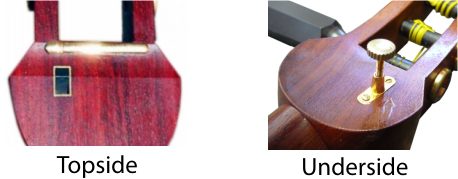There are two kinds of sao used on a shamisen.
Mitsuori
Mitsuori sao can be dismantled into three pieces. This makes the shamisen easier to transport and reduces risk of warping. It should also be mentioned that the pieces connect perfectly on specific position marks. This is useful for a fretless instrument. The hairline formed by the joint is almost like a fret, as it highlights certain positions to press the string.

Disassembling a mitsuori sao isn’t difficult, but it is crucial to know exactly what to do. For your understanding and enjoyment, watch Masahiro Nitta explain how to separate and assemble a mitsuori sao.
Nobezao
Nobezao is a single piece sao. It has no real disadvantages, other than it can’t be disassembled for easier transport. Because making a nobezao is easier than making a mitsuori sao, it is cheaper.

Sawari
All shamisen are made so the first string emits a buzzing sound, almost like a sitar. For nagauta shamisen, cheaper jiuta and tsugaru shamisen, this is how the tenjin (headpiece) will look in the picture below. As you can see, the kamigoma (metal strip) is under the two thinner strings while the ichi no ito (thick string) rests on bare wood. When struck, the thick string vibrates against the little ridge (sawari yama), making the buzzing sound.

In the 1890s, a mechanical device was made to adjust the amount of buzzing on high quality jiuta and tsugaru shamisen. As you can see in the picture below, the kamigoma is under all the strings and the device is installed under the ichi no ito. Watch how to use the azuma sawari.

